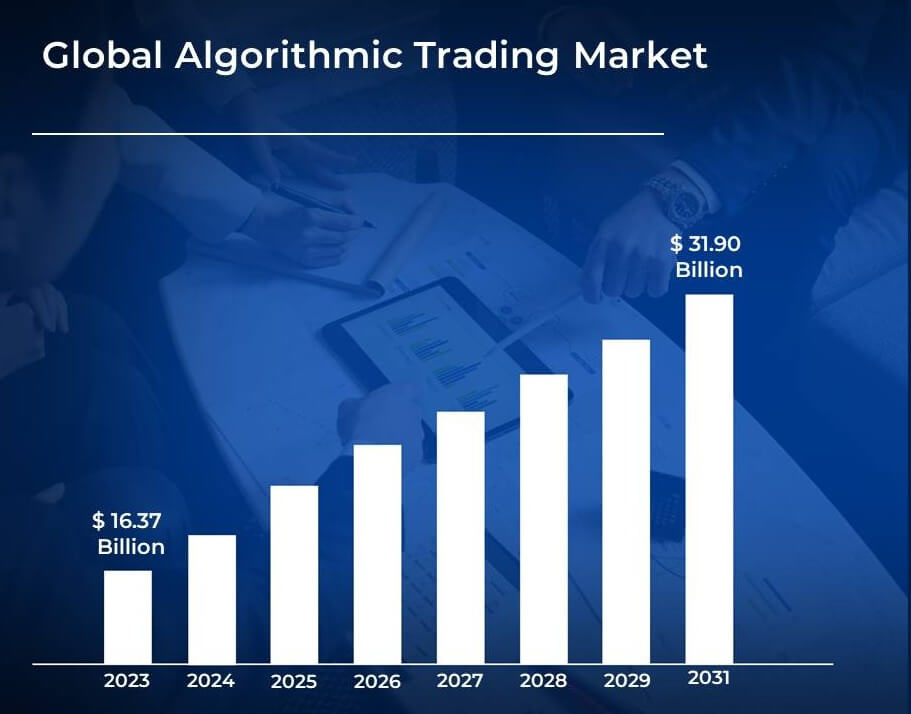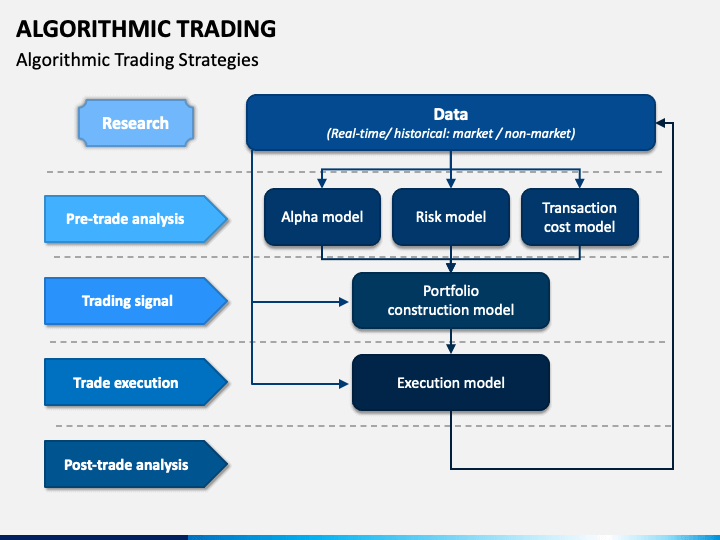
Algorithmic Trading Dominance: Automation Trends in Financial Markets
12 May, 2024
Algorithmic trading has become an integral part of the modern financial landscape, with its rapid, computer-driven execution strategies transforming the way markets operate. As of 2024, algorithmic trading accounts for approximately 60-75% of the overall trading volume in the U.S., European, and major Asian capital markets.
This remarkable statistic underscores the seismic shift that has occurred, as automated systems have usurped the role of human traders in executing trades with unparalleled speed and precision.
Firms like Virtu Financial, Citadel, and Two Sigma have become leading players in the algorithmic trading space, leveraging sophisticated technology to gain a competitive edge.

Why is Algorithmic Trading on the Rise?
The surge in algorithmic trading can be attributed to several key factors:
- Speed and Efficiency: Algorithmic trading systems can execute orders in fractions of a second, far surpassing human capabilities. For example, high-frequency trading firms can place and cancel orders in mere milliseconds, capitalizing on minuscule price discrepancies across markets.
- Data-Driven Decision Making: With access to vast volumes of financial data, algorithms can make informed and data-driven decisions. Firms use complex statistical models and machine learning techniques to identify patterns and trends that would be impossible for human traders to detect.
- Liquidity and Market Accessibility: Algorithmic trading enhances market liquidity, making it easier for traders to enter and exit positions. This is particularly beneficial for trading in less liquid markets, where algorithmic systems can provide continuous buy and sell orders.
- Risk Management: Automated systems can implement sophisticated risk management strategies that are consistent and unemotional. Algorithmic trading systems can quickly adjust positions and hedging strategies in response to changing market conditions, minimizing the risk of human error or emotional decision-making.
Algorithmic Trading Across The Globe
Algorithmic trading has taken the financial world by storm, dominating trading volumes across major markets.
- In the early 2000s, algo trading accounted for a mere 15% of U.S. equity trades. However, by 2009-2010, this figure had skyrocketed to over 70%.
- The global Algorithmic Trading market was valued at a staggering USD 12,963.35 million in 2022. Projections indicate a remarkable CAGR of 13.29%, reaching USD 27,405.2 million by 2028.
- A similar trend unfolded in Europe, with algorithmic trading rising from one-third of all trades in 2006 to 60-73% by 2009. By 2012, it stabilized around 50%.
Forex Markets Embrace Automation
The foreign exchange (FX) markets have also witnessed a remarkable surge in algorithmic trading. From a modest 25% of orders in 2006, algo trading reached an astonishing 80% by 2016.
Algorithmic Dominance Goes Global
This automated trading revolution has spread globally, beyond Western markets. In Japan, algo trading now accounts for 70-80% of the FX spot market and over 70% of equity orders on the Tokyo Stock Exchange.
Emerging economies, however, tell a different story. In India, for instance, algorithmic trading is estimated to account for only around 40% of the overall trading volume.
Current Trends in Algorithmic Trading
The landscape of algorithmic trading is continually evolving with several trends shaping its future:
- AI and Machine Learning. The integration of AI and machine learning is refining the way algorithms analyze data and make trading decisions. Firms are increasingly using deep learning models to identify complex patterns and make more accurate predictions in real-time.
- Cross-Asset Automation. Algorithms are expanding across asset classes, providing traders with a unified approach to managing diverse portfolios. This allows firms to leverage their trading expertise and technological advantages across different markets, such as equities, fixed income, and commodities.
- Real-Time Analysis. There is an increasing emphasis on tools that interpret trading analytics into actionable insights. Firms are investing in advanced visualization and reporting capabilities to quickly identify market opportunities and potential risks.

Common Strategies in Algorithmic Trading
Traders employ a variety of strategies within algorithmic trading to capitalize on market opportunities:
- Momentum: This strategy involves following market trends and capitalizing on the continuation of existing market movements. Algorithmic systems can rapidly identify and execute trades based on momentum patterns, often outperforming human traders.
- Arbitrage: Exploiting price discrepancies across different markets or related financial instruments⁶. Algorithmic trading systems can quickly identify and execute arbitrage opportunities, often at a much faster pace than manual trading.
- Index Fund Rebalancing: Adjusting portfolio weights to match index fund compositions at specific intervals. Algorithmic trading is particularly well-suited for this strategy, as it allows for precise and timely portfolio adjustments to ensure accurate index tracking.
The Role of AI in Algorithmic Trading
Artificial Intelligence (AI) plays a transformative role in algorithmic trading by:
- Enhancing Data Analysis. AI improves the analysis of complex market data for better decision-making. Firms are using deep learning algorithms to identify patterns and correlations that would be impossible for human traders to detect, leading to more informed and profitable trading decisions.
- Optimizing Strategies. AI algorithms process data swiftly, aiding traders in making informed decisions and optimizing strategies. This allows for the rapid development and testing of new trading models, as well as the continuous refinement of existing strategies to adapt to changing market conditions.
Conclusion
Algorithmic trading, leveraging the power of advanced technologies like artificial intelligence, has become the foundation of modern finance, equipping traders with unmatched speed, precision, and analytical capabilities to navigate the dynamic global markets.
As technology continues to advance at a dizzying pace, the prevalence and sophistication of algorithmic trading are poised to grow even further, solidifying its status as a fundamental and irreplaceable component of the financial landscape.
The future of trading has arrived, and it is undeniably algorithmic.